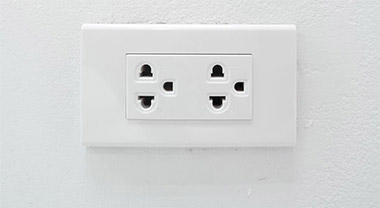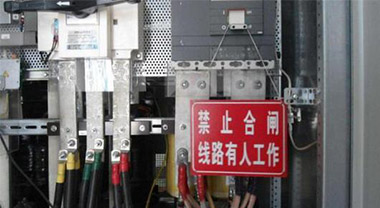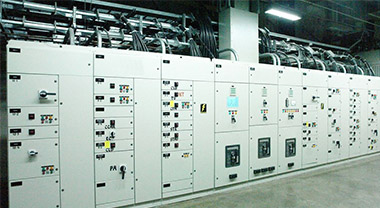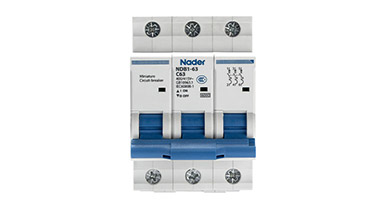What causes a breaker to trip?
1. Introduction
1.1. Brief overview of circuit breakers and their function
Circuit breakers are an essential component of electrical systems, designed to protect against electrical faults, such as overloading, short circuits, ground faults, and arc faults. By interrupting the flow of current when a fault is detected, circuit breakers safeguard electrical equipment and users, ensuring a reliable and safe electrical system.
1.2. Importance of understanding the reasons behind tripping
Understanding the reasons behind a circuit breaker tripping is critical in maintaining electrical safety and preventing damage to electrical systems. Identifying the causes of tripping allows for appropriate corrective actions, reducing the risk of equipment failure and minimizing downtime.
2. Common causes of circuit breaker tripping
2.1. Overloading
2.1.1. Definition and explanation
Overloading occurs when the electrical demand on a circuit exceeds its capacity. This causes the circuit's conductors to overheat, increasing the risk of insulation damage, equipment failure, and even fires.
2.1.2. Effects on the electrical system
An overloaded electrical system can cause circuit breakers to trip, protecting the system from further damage. Prolonged overloading can weaken a circuit breaker's ability to trip, rendering it ineffective and posing a significant risk to the electrical system.
2.1.3. Prevention and solutions
To prevent overloading, it is essential to ensure the electrical demand of connected devices does not exceed the capacity of the circuit. Proper circuit design, adhering to electrical codes and standards, and regular maintenance can help minimize the risk of overloading. In case of persistent overloading, upgrading the electrical system or redistributing the load across multiple circuits may be necessary.
2.2. Short circuits
2.2.1. Definition and explanation
A short circuit occurs when an unintended low-resistance path forms between two conductors carrying current. This results in a sudden, uncontrolled surge of current, causing the circuit breaker to trip to protect the system from damage.
2.2.2. Causes of short circuits
Short circuits can result from various factors, including damaged or deteriorated insulation, faulty wiring or connections, exposure to water or moisture, and damaged electrical equipment.
2.2.3. Detection and remedies
Identifying the source of a short circuit can be challenging, as it may involve inspecting the entire electrical system for signs of damage or improper connections. Professional electricians can use specialized tools, such as multimeters and insulation resistance testers, to pinpoint the location of a short circuit. Once identified, repairing or replacing the faulty components can resolve the issue.
2.3. Ground faults
2.3.1. Definition and explanation
A ground fault occurs when an unintended path forms between a live conductor and a grounded object, causing an unintended flow of current. This can result in circuit breaker tripping and poses a risk of electrocution.
2.3.2. Causes of ground faults
Ground faults can result from various factors, including damaged insulation, exposure to moisture, improper connections, or faulty electrical equipment.
2.3.3. Ground fault circuit interrupters (GFCIs)
GFCIs are designed to protect against ground faults by monitoring the flow of current and rapidly disconnecting the circuit if an imbalance is detected. Installing GFCIs in areas prone to moisture, such as bathrooms and kitchens, can help minimize the risk of ground faults.
2.4. Arc faults
2.4.1. Definition and explanation
An arc fault is an unintended electrical discharge that occurs when current flows through an unintended path, such as damaged or deteriorated insulation. This can generate intense heat, posing a risk of fire and damage to electrical equipment.
2.4.2. Causes of arc faults
Arc faults can be caused by various factors, including damaged or frayed wiring, loose or corroded connections, aging electrical components, or exposure to moisture.
2.4.3. Arc fault circuit interrupters (AFCIs)
AFCIs are designed to detect and mitigate arc faults by monitoring the electrical current for signs of arcing and rapidly disconnecting the circuit if a fault is detected. Installing AFCIs in electrical systems can help minimize the risk of arc faults and associated fires.
3. External factors causing breaker tripping
3.1. Environmental conditions
3.1.1. Excessive heat or humidity
Excessive heat or humidity can cause circuit breakers to trip, as high temperatures can affect the performance of electrical components and cause insulation to degrade. Proper ventilation, maintaining adequate distance between heat-producing devices, and ensuring appropriate temperature control can help prevent breaker tripping due to environmental conditions.
3.1.2. Water infiltration
Water infiltration can cause circuit breakers to trip by creating unintended conductive paths, leading to short circuits or ground faults. Ensuring proper sealing of electrical enclosures, using water-resistant components, and keeping electrical equipment away from moisture sources can help prevent water-related tripping.
3.2. Damaged or aging wiring
3.2.1. Wear and tear on insulation
Over time, the insulation of wiring can degrade due to wear and tear, exposure to heat, or mechanical stress. Damaged insulation can increase the risk of short circuits, ground faults, and arc faults, leading to breaker tripping.
3.2.2. Rodent damage
Rodents can cause significant damage to electrical wiring by chewing on the insulation, creating exposed conductors and increasing the risk of electrical faults. Regular inspections and proper pest control measures can help prevent rodent-related electrical issues.
3.2.3. Impact of aging wiring on breaker performance
Aging wiring can affect breaker performance by increasing the resistance of conductors, leading to overheating and potential electrical faults. Upgrading old wiring and replacing damaged or deteriorated components can help maintain breaker performance and minimize the risk of tripping.
4. Circuit breaker malfunctions
4.1. Worn or damaged circuit breakers
4.1.1. Effects on breaker performance
Worn or damaged circuit breakers can compromise the breaker's ability to detect and respond to electrical faults, increasing the risk of equipment damage and electrical fires.
4.1.2. Identifying and replacing faulty breakers
Regular inspections and testing of circuit breakers can help identify worn or damaged breakers. Replacing faulty breakers with appropriately rated and sized components can help maintain electrical system reliability and safety.
4.2. Incorrectly sized or rated breakers
4.2.1. Consequences of using improper breakers
Using incorrectly sized or rated breakers can cause nuisance tripping or, worse, fail to trip when needed, increasing the risk of equipment damage and electrical fires.
4.2.2. Proper selection and installation of circuit breakers
It is essential to select and install circuit breakers that match the specific requirements of the electrical system, adhering to electrical codes and standards. Consultation with professional electricians can help ensure the appropriate selection and installation of breakers.
5. Troubleshooting and resolving breaker tripping issues
5.1. Identifying the cause of breaker tripping
To effectively troubleshoot and resolve breaker tripping issues, it is essential to identify the underlying cause. This may involve inspecting the electrical system for signs of overloading, short circuits, ground faults, or arc faults, as well as considering external factors and breaker malfunctions.
5.2. Seeking professional help when necessary
When faced with complex or persistent breaker tripping issues, it may be necessary to seek professional help. A qualified electrician can provide expert guidance, identify the root cause, and perform repairs or upgrades to ensure a safe and reliable electrical system.
5.3. Ensuring regular maintenance and inspection of electrical systems
Regular maintenance and inspection of electrical systems can help identify potential issues before they escalate, reducing the risk of circuit breaker tripping and associated problems. Scheduling routine check-ups with professional electricians and following a proactive maintenance plan can help ensure electrical system reliability and safety.
6. Conclusion
6.1. Recap of common causes of breaker tripping
Circuit breaker tripping can be caused by various factors, including overloading, short circuits, ground faults, arc faults, external factors such as environmental conditions or damaged wiring, and circuit breaker malfunctions. Understanding these causes is crucial for maintaining electrical safety and system reliability.
6.2. Importance of addressing tripping issues to ensure electrical safety and system reliability
Addressing breaker tripping issues is essential to ensure electrical safety, protect equipment from damage, and minimize downtime. Identifying the root cause of tripping, seeking professional help when needed, and adhering to regular maintenance and inspection schedules can help prevent breaker tripping and maintain a reliable and safe electrical system.




